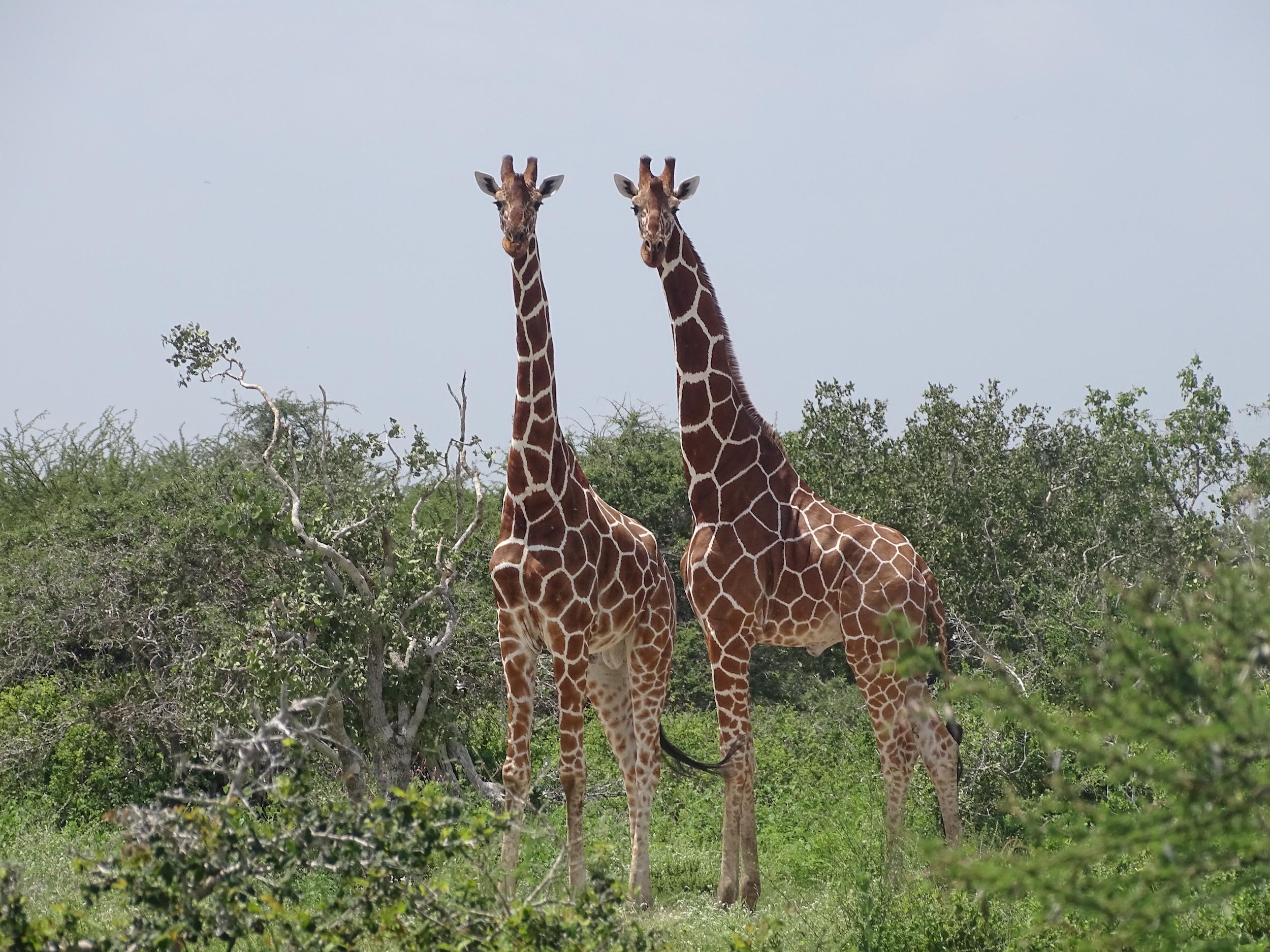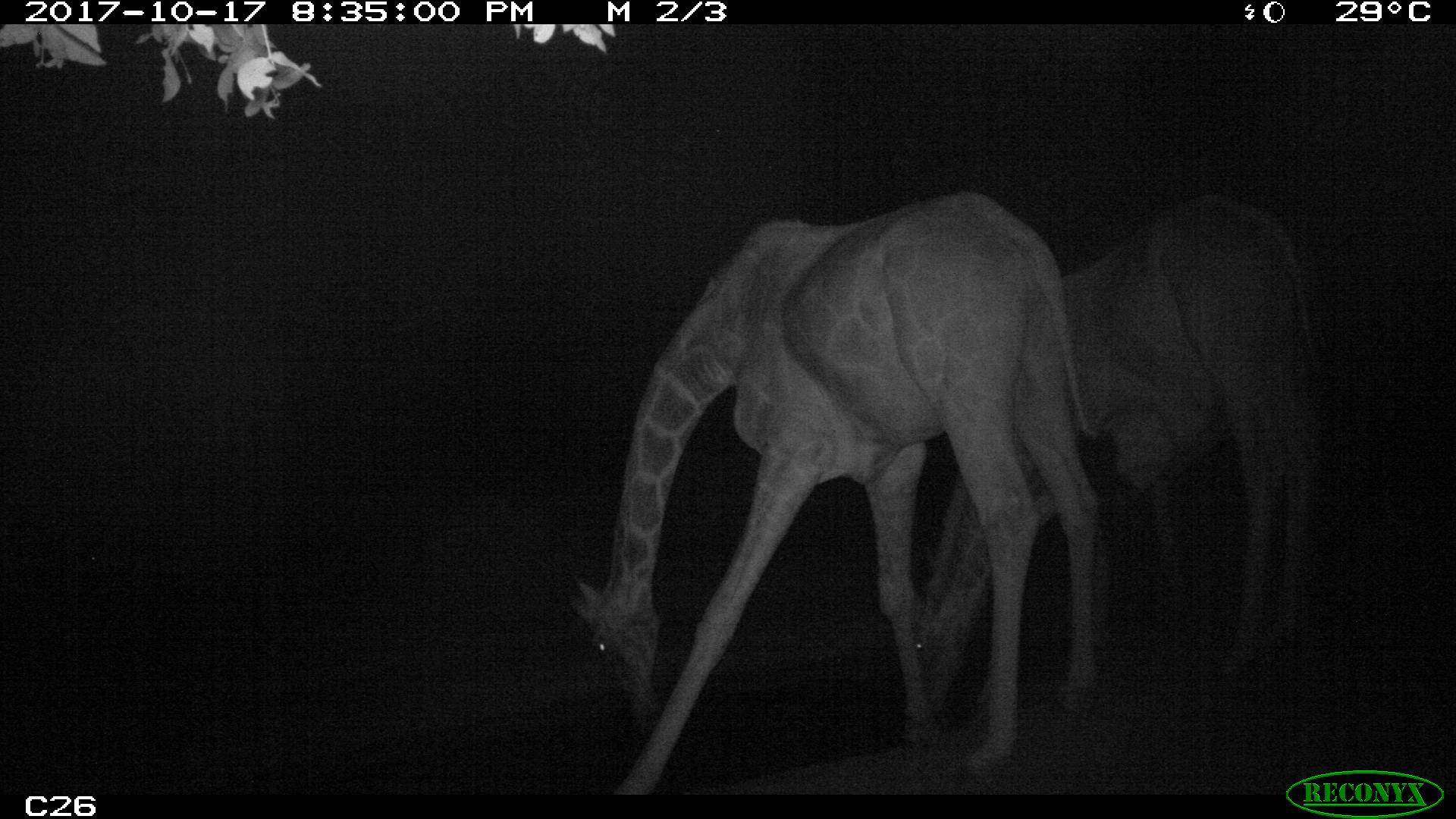As a supporter of tomorrow's conservation experts and innovators, the Conservation Leadership Programme provides funding to the critical, groundbreaking, and exciting projects of early career conservationists from around the world. And as technology becomes more and more integral to conservationists' work, many of these project teams are incorporating conservation tech into their efforts to protect and research species from the endangered to the elusive.
One such project, lead by Owino Raymond, is an effort to reduce human-giraffe conflict along the Kenya-Somalia border. This 2021 CLP Future Conservationist Award recipient is working in a region with a lack of protected spaces for endangered species like the Reticulated Giraffe, making this project all the more crucial to conserving these populations.

The lack of consistent conservation work in the region not only presents him with the unique challenge for conducting population surveys across wide, unprotected areas overlapping with humans and farms, but also presents a future opportunity for him to become a local leader of conservation in the region, conducting outreach and building data-informed strategies that could guide efforts for preventing human-wildlife conflict by protecting the giraffes' corridors to water sources.
We talked with Owino about what he hopes this project will accomplish, how technology like camera traps factor into his short-term and long-term goals for conservation in this region, and his path as an early career conservationist working in a region that presents unique challenges for protecting species and resolving human-wildlife conflict.

Read on to see our interview with Owino Raymond as he embarks on the next stage of this project.
_____________________
Could you talk us through a brief summary of your work and the technology you're using?
Garissa, along the Kenya-Somali border, is one of the high concentration areas for the endangered Reticulated Giraffe. In the recent past, some of the predominately nomadic pastoralists of Garissa began farming along the Tana River. This has led to an increase in human-giraffe conflict, presumably because the farms have blocked wildlife corridors to water points. The farmers have resorted to using lethal methods against giraffes (e.g., snares, spears, and ditches/pitfalls) that have increased giraffe injury and mortality.

Our project seeks to reduce human-giraffe conflict by testing methods like the use of floodlights and bee fences, and by conducting community outreach programs to reduce giraffe mortality and change the local farmers' attitude towards giraffe conservation. Before this human-giraffe conflict resolution work begins, we will conduct an initial survey to determine the density and abundance of reticulated giraffes in the conflict areas.

We intend to photograph giraffes and identify them use pattern recognition software (i.e., WildID) to determine their abundance. Similarly, we will monitor farm invasions, presumed to occur at night, using camera traps. This will enable us to determine conflict hotspots and test the proposed conservation action as outlined above.
WILDLABS has a growing community of early career conservationists interested in conservation technology career paths. Could you share some of the highlights of your own conservation career paths so far? Where would you like to go within the next ten years, and do you think conservation technology will play a big role in your future plans?
I am a Master’s student at the University of Nairobi, pursuing a degree in Biology of Conservation. I completed my undergraduate studies in 2017 at Maasai Mara University with a Bachelor of Science degree in Wildlife Management.
Currently, I am a research assistant at the Hirola Conservation Programme and a lead researcher in the Somali Giraffe Project, both in Garissa along the Kenya-Somalia border.

In the next 10 years, I plan to successfully complete my Master’s degree and join a Ph.D. programme in ecology, preferably through a scholarship in Europe or North America.
I plan to establish myself as a regional scientist, and set up a research group through a nonprofit organization to provide evidence-based information towards the conservation of threatened species in this unique but often neglected region. Given the vastness and volatility of this region, I foresee technology playing a large part in the success of my endeavors.
What challenges have you faced in this work, either with technology or otherwise?
The region along the Kenya-Somalia border is vast and virtually devoid of conservation areas. With most species occurring in communally owned lands, the lack of protected areas presents a unique challenge in studying and conserving them. Defining the extent to cover and securing equipment have both been major challenges. The region is also categorized as a highly volatile region, thus one has to operate with extreme caution.

The advancement of technological use in ecology and conservation could help overcome some of these challenges. However, technological equipment such as satellite tracking devices are very expensive to access, particularly for an upcoming conservationist with limited funding opportunities.
Are there lessons from your project so far that other WILDLABS members could apply to their own conservation technology work?
We are yet to test the proposed idea and we are excited to get started and see how it goes! We will be glad to share this information with the community as soon as it will be available. Similarly, we will be glad to learn from the member of WILDLABS!
What other new technologies or innovations could make your work easier, enhance your results, or allow you to expand or further scale up your work?
During the proposal development, I considered collaring the giraffes. This would have provided more reliable data on the spatial overlap of giraffes’ land use with preferred human land use.
To make do, I opted for tracking and recording giraffes' relocations only during the day using the observation method, and complimented it with questionnaires to accurately determine the giraffes’ corridors to the river Tana.

Although it will not compromise the study, the limited number of camera traps and motion sensor floodlights do limit the scale of our work. We will have to shift the limited resources around to ensure proper coverage of the study area.
Real-world impact is obviously an important goal for any conservation technology project. What results and impact do you hope will come from this work, both short-term and long-term?
In the short term, I would like to reduce farm invasion by the reticulated giraffes and prevent giraffes’ injuries and mortality as a result of retaliation from agitated locals. In the long-term, I hope this project will have a positive change in giraffe population by reducing farmers-giraffe conflict, and perhaps help to design protected areas to adequately conserve their corridors to watering points.
_____________________

As early career conservationists like Owino demonstrate how using even moderate amounts of conservation technology can transform project goals and open up wider possibilities for addressing major challenges like human-wildlife conflict, it's plain to see that supporting up-and-coming leaders in conservation tech, particularly within regions in need of more conservation capacity, resources, and outreach, is key to finding new solutions and protecting endangered species.
Owino's CLP-supported work is just ramping up, and we're excited to see how his efforts evolve over time and transform camera trap data into viable solutions and outreach across this region! We'll check in with Owino later on to see what further lessons he has to share with the WILDLABS community as his work continues; in the meantime, stay tuned on WILDLABS to meet more early career conservationists, and check out CLP's supported projects for more information on this and other projects powered by conservation tech!
Thanks to Owino Raymond for talking with us and sharing photos, and to CLP for sharing their project leaders with the WILDLABS community!


Add the first post in this thread.